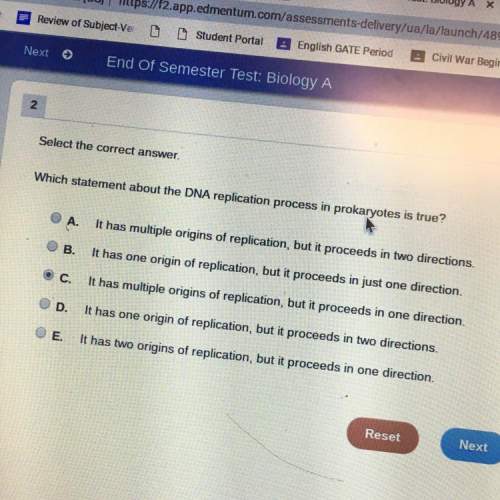
Compared to the control (red line), in which both sea urchins and limpets are present, removing limpets alone (blue line) did not have much effect. this might suggest that limpets have little effect on seaweed distribution. however, seaweed cover increased much more when both urchins and limpets were removed (purple line) than when only urchins were removed (green line). how might you explain this result? how might you explain this result? when only urchins were removed, limpets increased in abundance and reduced seaweed cover. both limpets and urchins eat seaweed, so removing either species has the same effect on seaweed cover. both limpets and urchins eat seaweed, so both species have to be removed in order for seaweed cover to increase. if only limpets are removed, more time is needed for seaweed cover to increase.

Answers: 2


Another question on Biology

Biology, 21.06.2019 19:00
One statements is an example of a scientific observation. another statement is an example of a scientific explanation. identify the correct statement for each category to illustrate how scientific explanations are inferred from scientific observations.
Answers: 3

Biology, 21.06.2019 19:40
Astudent drew the following flowchart to show the movement of nutrients. soil → roots → plants →? where does nitrogen go next? a. directly into nearby animals as nutrition b. directly into aquifers through condensation c. directly into the air through evaporation d. directly into nearby plants during fixation
Answers: 1

Biology, 22.06.2019 00:50
Ascientist separates a population of mice into two groups. what would most likely increase the rate of speciation in this population. a. teach the two groups different tricks b. allow the two groups to breed with each other c. put the two groups in different environment d. have the two groups live in identical ecosystems
Answers: 3

Biology, 22.06.2019 06:40
Which of these has happened to your food by the time it reaches your small intestine? a. all the macromolecules have been broken down completely. b. lipids and starches have been partially broken down. c. starches and proteins have been partially broken down. d. proteins and lipids have been broken down into subunits.
Answers: 3
You know the right answer?
Compared to the control (red line), in which both sea urchins and limpets are present, removing limp...
Questions

Mathematics, 29.08.2019 15:50




Mathematics, 29.08.2019 15:50


History, 29.08.2019 15:50

Chemistry, 29.08.2019 15:50




History, 29.08.2019 15:50

Social Studies, 29.08.2019 15:50

Chemistry, 29.08.2019 15:50





Mathematics, 29.08.2019 15:50

Social Studies, 29.08.2019 15:50




